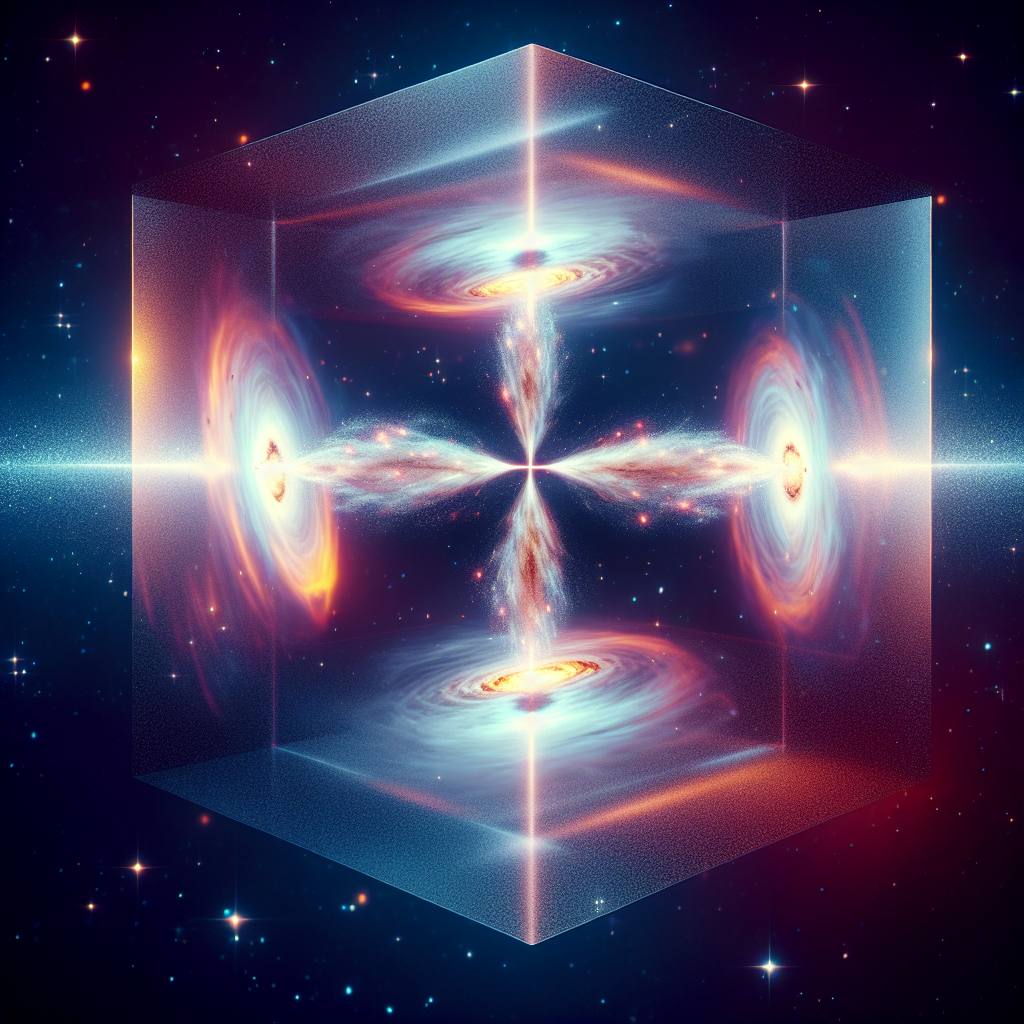Ever seen a cosmic gem that defies all conventional wisdom? Enter the Einstein Cross, a spectacular astronomical phenomenon that bends not just light, but probably the rigid realities many leftists can’t handle. Discovered in 1985 by astronomer John Huchra and his team at the Fred Lawrence Whipple Observatory in Arizona, the Einstein Cross is a quasar located over eight billion light-years away. What’s exciting about this phenomenon is that it’s not just an isolated celestial body. It’s a wonder of General Relativity in action, taking place in the constellation Pegasus. Thanks to the gravitational lensing effect predicted by Einstein's theory, the light from a distant quasar is bent around a massive galaxy situated about 400 million light-years from Earth, creating four distinct images of the same quasar, positioned like a cross around the core galaxy.
Let’s talk about gravitational lensing for a second. This effect occurs when the gravity of a massive object, like a galaxy, bends the path of light from another, more distant object. It’s the universe’s unwitting homage to the conservative principle of defying straight paths and conventional thinking. Leftists can't appreciate it because it challenges their linear, simplistic view of the universe where everything is straightforward and fits into squeezed narratives.
The Einstein Cross isn’t just a magnificent spectacle; it’s a cosmic testimonial to the truth embedded in the universe—complex, multi-faceted, and far beyond the reach of simplistic worldviews. The quasar, scientifically labeled Q2237+030, is so far from Earth that the light we see today was emitted when our planet hadn't even thought about humans. Yet, here it is, defying the odds, held up by a cosmic lens provided by an elliptical galaxy. Are we not fascinated by how a dense object can alter reality itself, splitting an image into multiple snapshots for us to appreciate? Liberals may find themselves at odds with such humbling complexity.
The gravitational puzzle that creates the Einstein Cross also underpins the determination of astronomical distances and masses. It’s an open invitation for sceptics to witness the profound beauty of our universe, unmarred by human ideologies. Even the process of detecting these quasars leverages data from both ground-based and space-based telescopes, exemplifying partnerships that actually work. Imagine using something tangible like science to get answers! It’s a sobering lesson for those who think moral grandstanding changes reality.
Skeptics often argue about the existence of God, but phenomena like the Einstein Cross invoke questions too profound for even the most atheistic soul. How do a galaxy and quasar collaborate in perfect harmony to create a cross? Such design feels intentional, doesn’t it? The cold, deterministic universe tells a different tale when it chooses such artistic displays that tick even the most scientific of hearts. Another point ignored by those who think everything has to fit within a human-preferred narrative.
By understanding the Einstein Cross, we open a window into both our past and our expansive universe. It's a reminder that while humanity may argue over tidbits and trivialities here on Earth, a much grander narrative is playing out in the skies. The Einstein Cross is essentially a wake-up call, asking us to reconsider our place in the universe and the rules of our existence. It’s like a cosmic audit on our humility.
Einstein himself, a scientist whose innovation transcended political boundaries, couldn't have predicted how his work would eventually unveil beauty in such a profound way. His theory of relativity not only explained the bending of light around massive objects, but it also predicted places like the Einstein Cross, where his ideas are visibly proven right. It’s a slap in the face of human arrogance that believes science and mysticism can be cornered into ideologies.
Now let's tackle the ultimate mind-boggle. The discovery of such phenomena forces us to question the nature of reality itself. Do we see the world as it truly is, or are we simply observing the universe through the ‘gravitational lenses’ of our own biases? It’s as if the Einstein Cross gives us a lesson far removed from just physics. It pushes us to challenge our understanding, much like conservatives dare to question the status quo—whether it’s a leftist worldview or a cosmic spectacle.
So the next time you ponder or dismiss the complexity of the universe, remember the Einstein Cross. It doesn’t just sit there like any other cosmic spectacle; it’s a standing challenge to anyone invested in simple answers. It’s more than just an astronomical phenomenon; it’s a tribute to complexity and diversity, the same things that irritate anyone on the extreme left.
To think that an object so distant impacts our scientific understanding so significantly can be a striking metaphor for our lives. We may never fully grasp the reach or effects of our actions, but sometimes the most humbling lessons come from light traveling billions of years to reach our eyes. One has to only look up and give credit where it’s due—to the enormous universe and its intricate design.

